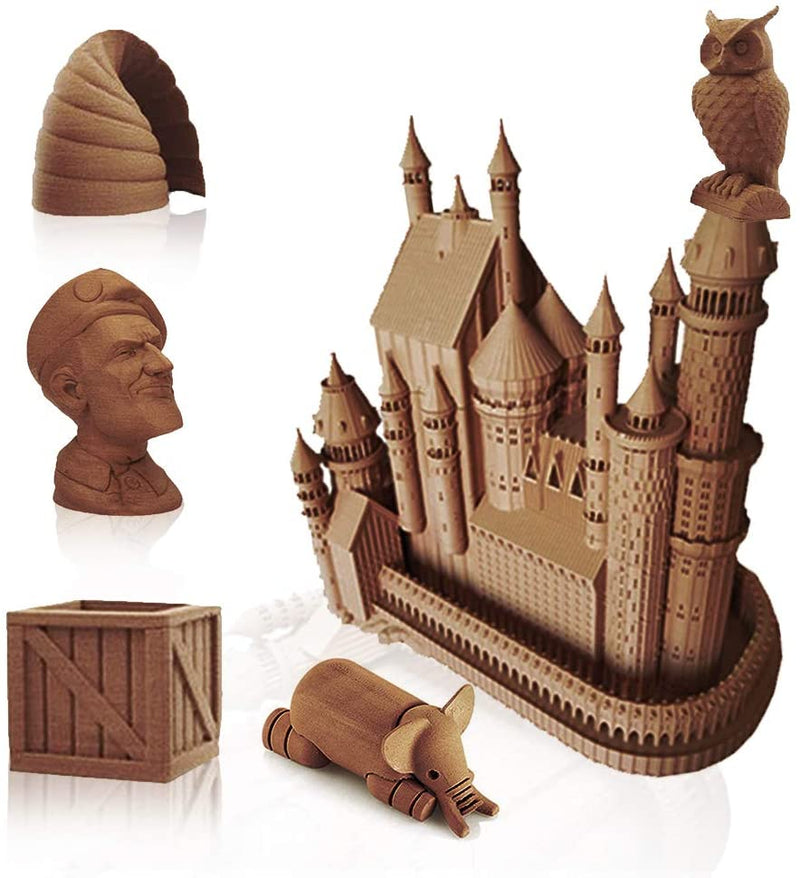Unlock the Secrets to Sourcing the Perfect Wood Filament for Your 3D Printing Projects!
3D printing has transformed the creative landscape, allowing enthusiasts and professionals alike to bring their imaginative designs to life. Among the myriad of materials available, wood filament has garnered significant attention due to its unique aesthetics and tactile qualities. This exciting material combines the best of both worlds—offering the ease of traditional plastic filaments while imbuing prints with the rich texture and warm appearance of wood. As more creators turn to wood filament for their projects, understanding how to source high-quality options becomes pivotal for achieving successful and satisfying results. In this article, we will explore the essential aspects of wood filament, from its composition to tips on sourcing and working with it effectively.

Understanding Wood Filament
Wood filament is a specialized 3D printing material composed primarily of a blend of polylactic acid (PLA) and fine wood particles. The incorporation of wood not only enhances the filament's visual appeal but also provides a distinctive texture that mimics real wood, making it perfect for creating decorative items, prototypes, and functional parts. One of the standout advantages of using wood filament is its remarkable printability, which enables smooth extrusion and minimal warping during the printing process. Additionally, wood filament can be sanded, stained, and painted, allowing for remarkable post-processing possibilities. The ability to achieve various finishes makes it an attractive choice for those looking to add a natural touch to their 3D printed creations.
Key Factors to Consider When Sourcing Wood Filament
When purchasing wood filament, several critical factors should be taken into account to ensure optimal results. First and foremost is printability; look for filaments that boast consistent diameter and quality, as this directly affects the printing process. Compatibility with your specific 3D printer is another vital consideration, as some machines may require specific temperature settings or nozzle sizes to effectively extrude wood filament. The desired finish is also paramount; different wood filaments come with varying concentrations of wood particles, affecting both the appearance and texture of the final product. For instance, some filaments may yield a more pronounced wood grain, while others may offer a smoother finish. Understanding these factors will help you make informed decisions when sourcing wood filament, leading to better outcomes in your projects.
Where to Source Quality Wood Filament
Finding high-quality wood filament can be an enriching journey, with several sourcing options available. Online marketplaces offer a vast array of choices, allowing you to compare different brands and read reviews from fellow users. Specialized 3D printing retailers often carry a curated selection of wood filaments, which can be beneficial if you're looking for specific types or blends. Additionally, local suppliers and craft stores may have wood filament in stock, providing an opportunity to inspect the product before purchasing. When evaluating the quality of filament, consider the manufacturer’s reputation, customer feedback, and whether the filament has undergone rigorous testing for consistency and performance. A friend of mine once shared his experience of buying wood filament from a lesser-known online store, only to find it splintered during printing. This serves as a reminder to do your research and choose reliable sources.
Tips for Working with Wood Filament
Working with wood filament can be a rewarding experience, but it does require some specific techniques to achieve the best results. Start by setting your printer to an optimal temperature range, typically between 180°C and 220°C, as this can vary depending on the filament brand. A larger nozzle size, such as 0.4 mm or larger, is often recommended to prevent clogging from wood particles. Additionally, make sure your print bed is well-prepared; using a heated bed can help with adhesion and reduce warping. Post-processing techniques like sanding can enhance the wood-like finish, while staining can be used to add depth and character to your prints. I remember the first time I tried staining a wood filament print; the transformation was stunning and added a level of sophistication that truly brought the piece to life.
Mastering Wood Filament for 3D Printing Success
In conclusion, sourcing the right wood filament is crucial for anyone looking to elevate their 3D printing projects. By understanding the composition of wood filament, considering key factors when purchasing, exploring various sourcing options, and employing effective working techniques, you can achieve exceptional results in your creations. As the popularity of wood filament continues to grow, take the time to explore the options available to you and embrace the beauty and versatility that this unique material has to offer. With the right wood filament in hand, your 3D printing journey is bound to be an exciting and fulfilling adventure!








